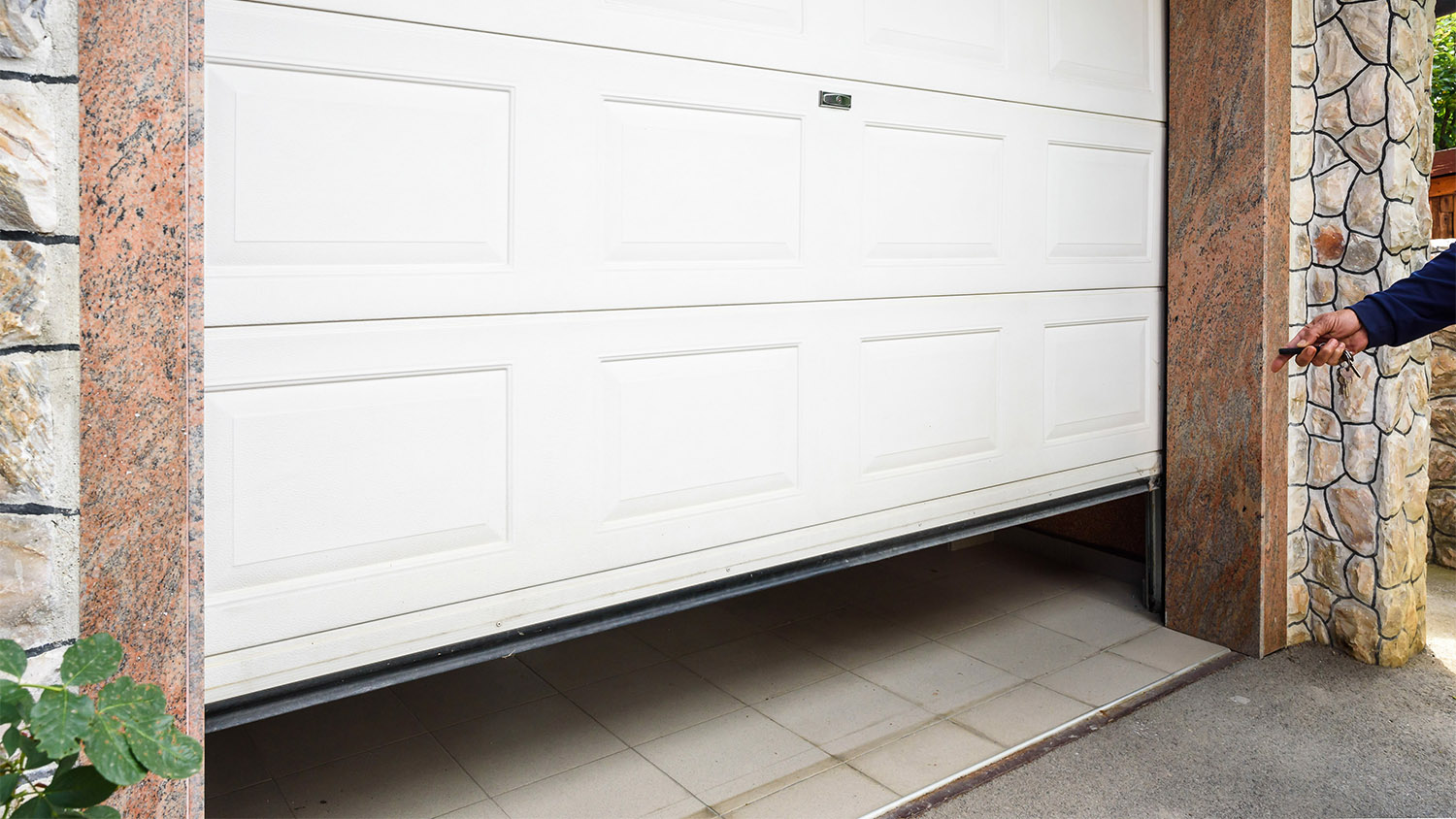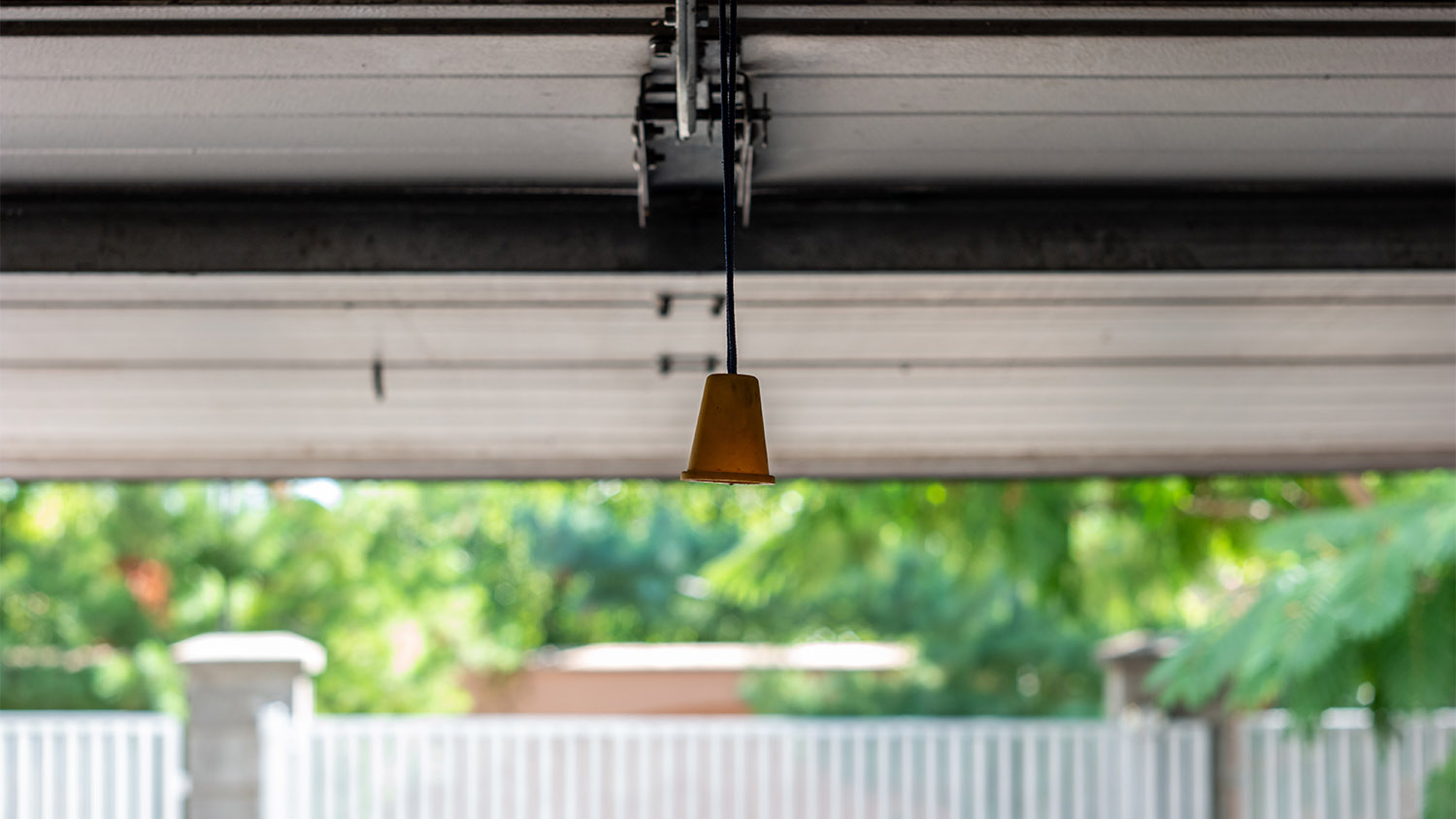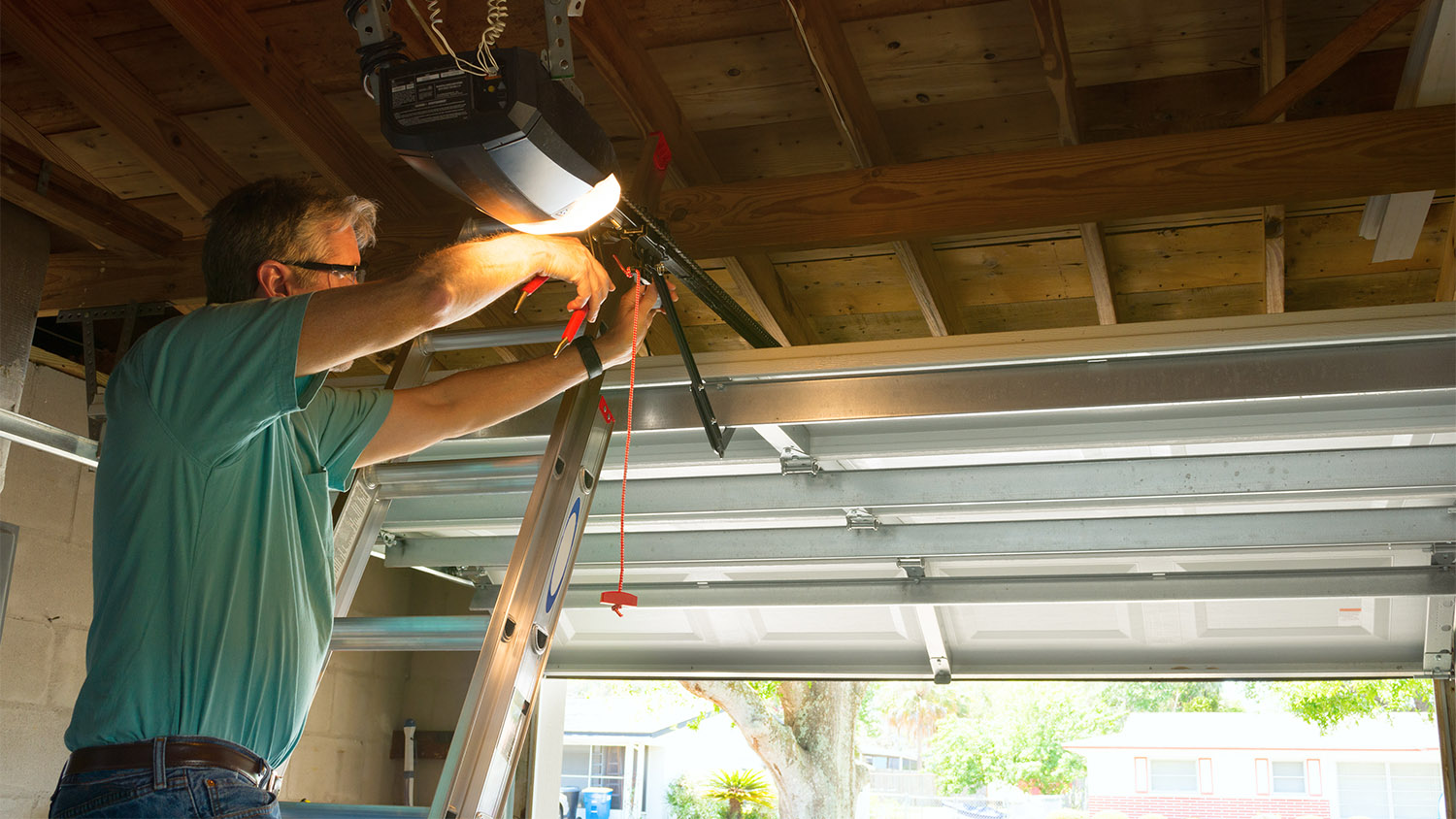5 Warning Signs You Have a Broken Garage Door
A broken garage door is inconvenient, but it can also leave your home unsecured


Inspect the springs for signs of wear-and-tear.
Check the tracks and rollers for damage and obstruction.
You should hire a pro to repair or replace your garage door.
Lubricating all metal parts of your door could fix the issue.
So, you just got into your car to leave the house, only to discover that your garage door isn’t working properly? A broken garage door isn’t just inconvenient; it also presents a security problem. It’s important to know how to inspect your garage door, so you can catch small issues before they become serious problems.
If your garage door is at risk of failing, there are a few red flags to watch for that could help you identify a broken garage door before it becomes a serious issue.
1. The Garage Door Takes Too Long to Open
Most garage doors have one of two types of springs: torsion or extension springs. Because we use our garage doors multiple times a day, every day, it’s normal for these springs to lose their tension. If your garage door is taking longer than a few seconds to open, inspect the springs for signs of wear-and-tear. If they’re corroded or worn down, it may simply be time to replace the garage door springs.
It’s also normal for other parts of your door to become worn over time. Try lubricating all tracks, hinges, and brackets, as well as the springs (if they’re not visibly damaged, of course). If this doesn’t do the trick, it’s time to call a professional. We must stress that garage springs are under a lot of tension, meaning they can be very dangerous to repair. Always call a garage door installer near you to handle garage door spring repairs.
2. The Garage Door Won’t Open or Close

If your door won’t open or close at all, the culprit could be worn-out or broken springs, but there are a host of other reasons why this issue arises. Here are some ways to troubleshoot your garage door if it’s not opening or closing properly:
Check the sensors to make sure they’re in proper alignment and nothing is blocking them. Consider organizing your garage to make sure storage solutions and debris don’t routinely get in the way of the sensors.
Check the tracks for damage or obstructions.
Inspect the rollers and lubricate them as needed.
Make sure the batteries in your remote aren’t dead.
If the garage door opener isn’t working, first check it to make sure it’s getting power.
If you have insulated your garage door, check to see if your springs need to be adjusted to account for the additional weight.
3. The Garage Door Opens or Closes—on Its Own
Creepy, right? If your garage door is opening and closing all by itself, it’s likely due to one of the following reasons:
Your door is picking up wireless signals from a neighbor.
The circuit board is malfunctioning.
You need to adjust the limit settings.
The control buttons are stuck.
While it’s not a foregone conclusion that you’ll need a new door if it’s opening and closing on its own, this could very well be the case. It’s worth consulting with a garage door professional to help you troubleshoot the issue and find the best solution.
4. You Hear Strange Sounds Coming From the Door

First, try to identify the type of noise. Is it squeaky or grinding? If so, you can probably silence the squeaks with some lubricant—make sure your rollers and tracks are well-greased.
Do you hear a loud popping or rattling sound? This could be because a nut, bolt, or screw has become loose, in which case you can tighten this hardware yourself.
However, the sound could be coming from your garage’s spring system, and you should
never try to repair or adjust the springs yourself.
Especially if you’ve already tried lubricating the metal parts of the door and it’s still making loud noises, it’s likely time to contact an expert.
5. You Can See That the Door is Uneven and/or Off Track
If your garage door looks crooked or off track in any way, it’s very possible that you're dealing with a broken spring assembly or worn-out cables. As covered in the previous section, you shouldn’t try to fix a broken spring on your own (especially torsion springs). This could cause serious injury, so it’s a job that’s best left to the pros.
Hire a Garage Door Professional

If you’re just doing a garage door tune up, you can safely get away with doing yourself. However, it’s best not to try to DIY repairs if you have a broken garage door. Door repair and replacement is tricky and requires professional knowledge and expertise. Plus, if you just have a minor issue but end up making a mistake in the DIY repair process, you could do more damage and needlessly be on the hook for the full cost of garage door replacement. When it doubt, call in a professional to help solve your problem.
Frequently Asked Questions
It is possible to open a garage door with a broken spring, but it’s not recommended. Doing so could result in serious injury. If you’re in an emergency situation, though, you can pull the emergency release cord to disconnect your garage door opener, and then lift the door manually from the handle, being careful to keep your fingers away from the springs. Since the springs will no longer be there to prevent the door from closing automatcally, you’ll need to have someone put clamps on the tracks under the door once it’s opened to prevent it from slamming shut.
Yes, it’s usually a good idea to replace both garage springs if one breaks for two reasons. First, if one spring breaks because of old age, chances are that the other one isn’t far behind. Replacing both will save time and money. Second, when one spring breaks, it puts excessive and uneven pressure on the other one, which makes damage to the remaining spring more likely. Since you already have a technician coming to repair one, you might as well get both done to save some time and a trip service fee.





- Should I Repair or Replace a Garage Door Spring?
- What Are All the Parts of a Garage Door?
- Why Your Garage Door Won’t Stay Closed and What to Do About It
- How to Manage a Broken Garage Door Spring
- Why Your Garage Door Opens a Little and Then Stops
- Garage Door Installation Tips Every Homeowner Should Know
- 10 Garage Door Maintenance Tips for Maximum Longevity
- How to Adjust a Garage Door Spring: Bounce Back Before It Breaks
- What to Do if You Backed Into Your Garage Door
- How to Make a Garage Door Quieter: 7 Ways to Reduce Noise









